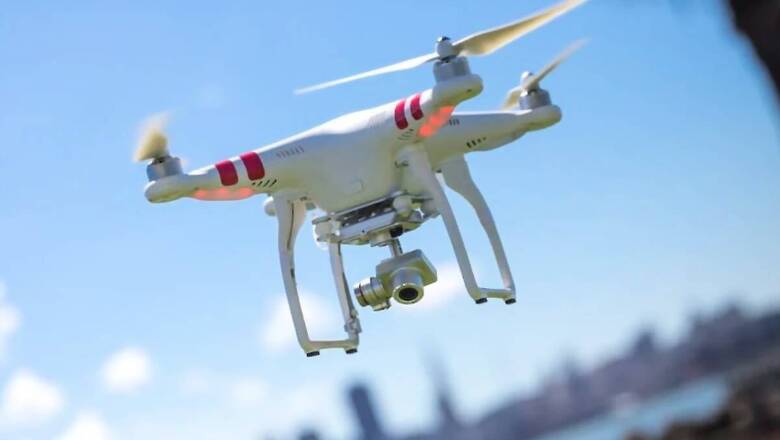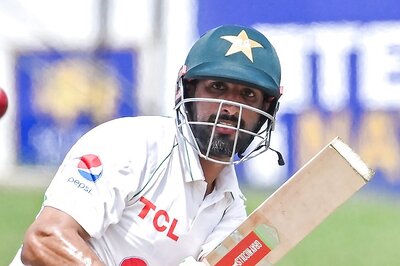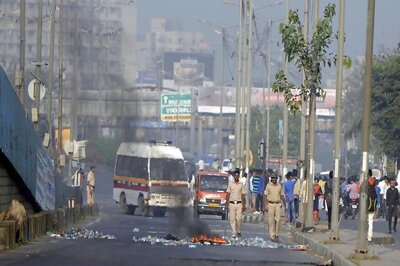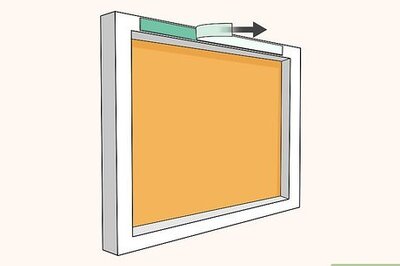
views
The Directorate General of Civil Aviation (DGCA) recently released draft drone regulations that have got the start-up and investor community in India excited about the future prospects for the drone industry. For starters, no specific permissions would be required to fly even large drones (500kg max weight) up to 400ft in “green zones”. The government has already released over 300 green zones and it is being estimated that over 80% of the Indian landmass will come under these. Also, no specific permission would be needed in green zones even for long-range flight, night operations, different payloads, delivery, spraying, etc.
Next would be yellow zones, which would be in regions close to airports and sensitive installations. Here also minimal automated online permissions would be needed to fly up to 200ft, keeping a distance of at least 12km from airports and other sensitive installations. This would mean that practically in 90-95% of India, smaller drones would be able to fly without much need of lengthy regulatory approval and licenses. The only thing required is to ensure that the drone has compliance certification given by the DGCA or an agency authorised by the government.
Additionally, six months would be provided to get safety compliances like NPNT (No Permission No Take-off) and geofencing. What’s more is that nano (under 250g drones) and defence drones would be exempt from even these regulations. For yellow and red zones, a simple online approval process would be required and so would be government-certified trained pilots for drones over 2kg. But the total number of forms have been reduced from 25 to 5. Additionally, the DGCA can provide exemptions from even these provisions on a case-by-case basis.
Moreover, trials have started for beyond line of sight operations where drones would be able to cover hundreds of kilometres in fully autonomous operations. This would pave the way for ecommerce, food delivery, quick commerce, drone taxis and emergency delivery. A major boost will also come for drone software companies as well, which will provide the platform that drives up this scale.
As far as Omnipresent is concerned, we already have all the clearances and compliances met. This includes DGCA NPNT certification, pilot certification from DGCA, MHA clearance for 5 years, DGCA clearance for beyond visual line of sight trials, etc. We have also built a drone nerve centre that allows autonomous monitoring and operations of hundreds of drones and has inbuilt AI behaviours like obstacle avoidance, object detection, tracking-counting, drone chase, etc. The nerve centre also allows new behaviours to be added based on training data. Our drone autopilot software also has a unique engine failsafe feature, which allows the drone to manoeuvre safely even in case of an engine failure. We have unmatched safety standards with 7 levels of failsafe in autopilot software, which we feel are important when operating drones on a large scale. Our performance has also been vetted by the Survey of India (SoI). In a recent SoI tender that required extreme centimetre-level precision, Omnipresent was among the top 3 companies that could qualify on data output quality out of 14 companies that were bidding. We have had 100 plus deployments all across India. Some of the top oil refineries, power plants, cement plants, metal plants, ecommerce giants, and security companies have been using our drone nerve centre. We are also empanelled as a drone solutions provider with half a dozen state governments.
Currently, our drones have the capability to carry up to a 15 kg payload, fly up to 2 hours and 100km in a flight. But with the new regulations in place, we are also looking at building software/hardware to support larger drones like drone taxis and drone courier services. We feel that in the next 2-3 years, the main differential would become drone software as hardware would stabilise. This is why we have put a lot of effort into building drone nerve centre software, which can support any drone virtually, as long as we have an API to exchange data and control signals with the drone. In fact, our software was even used by the Chandrayaan 2 rover for perception and navigation.
Some sectors will see exponential growth with the new regulations in place. Firstly, we will see 2-3 unicorns in the drone delivery space, especially for enabling quick commerce, doing millions of deliveries every day. The deliveries will probably be done at a fulfilment centre or a guard room in an apartment complex instead of individual houses. With drones up to 500kg being allowed, they could also replace small truck-based deliveries in B2B operations.
The next big sector would be mapping. The government recently allowed mapping to be done by private entities to boost this sector. We will see drones map every nook and corner of India at a centimetre-level resolution. We have already seen this happening in the SoI Swamitva scheme where it plans to map all 6 lakh villages in India. The next big thing will be drone-based agriculture. Drones will be used for detecting crop problems in advance and precision spraying. This will be a round-the-year activity required in almost 50% of India’s landmass. It will be a big boon for farmers as drones have been shown to boost agricultural productivity by up to 20-25%. It will also generate lakhs of jobs locally for drone pilots and technicians. Another sector which is already booming would be drone-based industrial assets’ inspection. This is especially useful for tall structures like cellphone towers, power line towers, chimneys, flares, cooling towers, etc. If we consider just cellphone towers, India has over a million of them. Asking someone to climb one of these structures to inspect is risky, unreliable and expensive as well. The next push would come for monitoring of construction projects; be it buildings, highways, or railways. This will be useful in project monitoring, insurance assessment, repair assessment, etc. The NHAI has already announced that all its road projects will mandatorily require drone data capturing and assessment. In the coming few years, a new sector that will emerge would be drone-based taxis, with the government allowing up to 500kg drones in green zones. These taxis would be able to carry 1-2 people within a range of about 50-100km within a city in a matter of minutes, cutting out traffic. They will require very little space for landing and take-off compared to a traditional helicopter. Also, being battery-powered, they will have a much lower operating and maintenance cost.
Praveen Sinha, founder and former managing director of Jabong.com, said on the development, “We had worked with Omnipresent back in 2015 and successfully demonstrated drone-based deliveries. However, at that time, regulations were not favourable for a scale-up. Now, with new regulations in place, it has become quite attractive for big ecommerce players like Flipkart, Zomato, Swiggy and Amazon to start large-scale drone-based deliveries. Also, medicine and emergency delivery from companies like Pharmeasy, NetMeds and 1mg will also become favourable via drones.
The views expressed in this article are those of the author and do not represent the stand of this publication.
Read all the Latest News, Breaking News and Coronavirus News here.




















Comments
0 comment